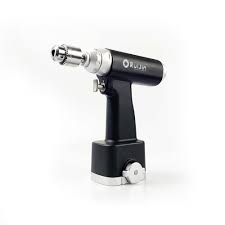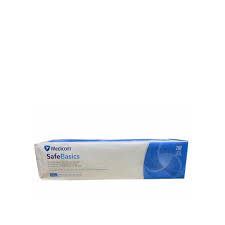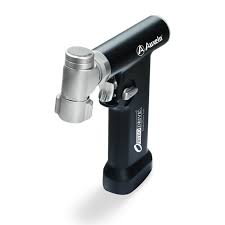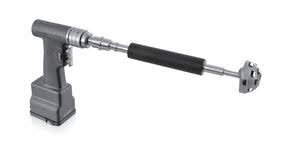Design and Structure
Orthopedic bone drills are typically handheld, motor-driven devices made from medical-grade stainless steel and high-impact polymers for durability and ease of sterilization. The drill consists of three primary components:
-
Drill Handpiece: The main body that houses the motor (electric or pneumatic), designed for ergonomic grip and control.
-
Chuck/Collet: A mechanism that securely holds various types of drill bits or attachments.
-
Trigger Mechanism: Enables the surgeon to control speed and direction (forward/reverse) during operation.
Drills may be battery-operated, corded electric, or air-powered (pneumatic), depending on the surgical setting and surgeon preference. Most modern drills offer variable speed settings and torque control to adapt to different bone densities and procedures.
Types of Bone Drills
Orthopedic bone drills are available in several configurations tailored to specific surgical needs:
-
Manual Bone Drills: Simple hand-cranked models used in basic or field procedures.
-
Electric Bone Drills: Powered by rechargeable batteries or wall power, suitable for precision surgery.
-
Pneumatic Bone Drills: Driven by compressed air, known for lightweight operation and minimal heat generation.
-
Cannulated Drills: Designed with a hollow shaft to accommodate guidewires during procedures like intramedullary nailing.
Each type may be compatible with various attachments such as burrs, reamers, or saw blades, increasing versatility in orthopedic procedures.
Surgical Applications
Orthopedic bone drills are used across a broad range of orthopedic and trauma procedures, including:
-
Fracture Fixation: Drilling holes to insert bone screws and plates.
-
Joint Replacement Surgery: Preparing bone for prosthesis implantation.
-
Spinal Surgery: For pedicle screw insertion and vertebral fixation.
-
Arthroscopic Procedures: Creating access points or anchor placements.
Their precision and adaptability make them indispensable in both routine and complex orthopedic interventions.
Sterilization and Maintenance
Bone drills must be properly cleaned and sterilized after every use. Most are autoclavable, though components like batteries and motors may require special care. Regular maintenance, including lubrication and inspection for wear, is essential to ensure safety and performance.
Conclusion
The orthopedic bone drill is a vital instrument in modern orthopedic surgery, offering speed, accuracy, and control in bone-related procedures. With multiple configurations and attachments available, it supports a wide range of surgical applications while contributing to faster, safer, and more effective patient outcomes.







Reviews
There are no reviews yet.